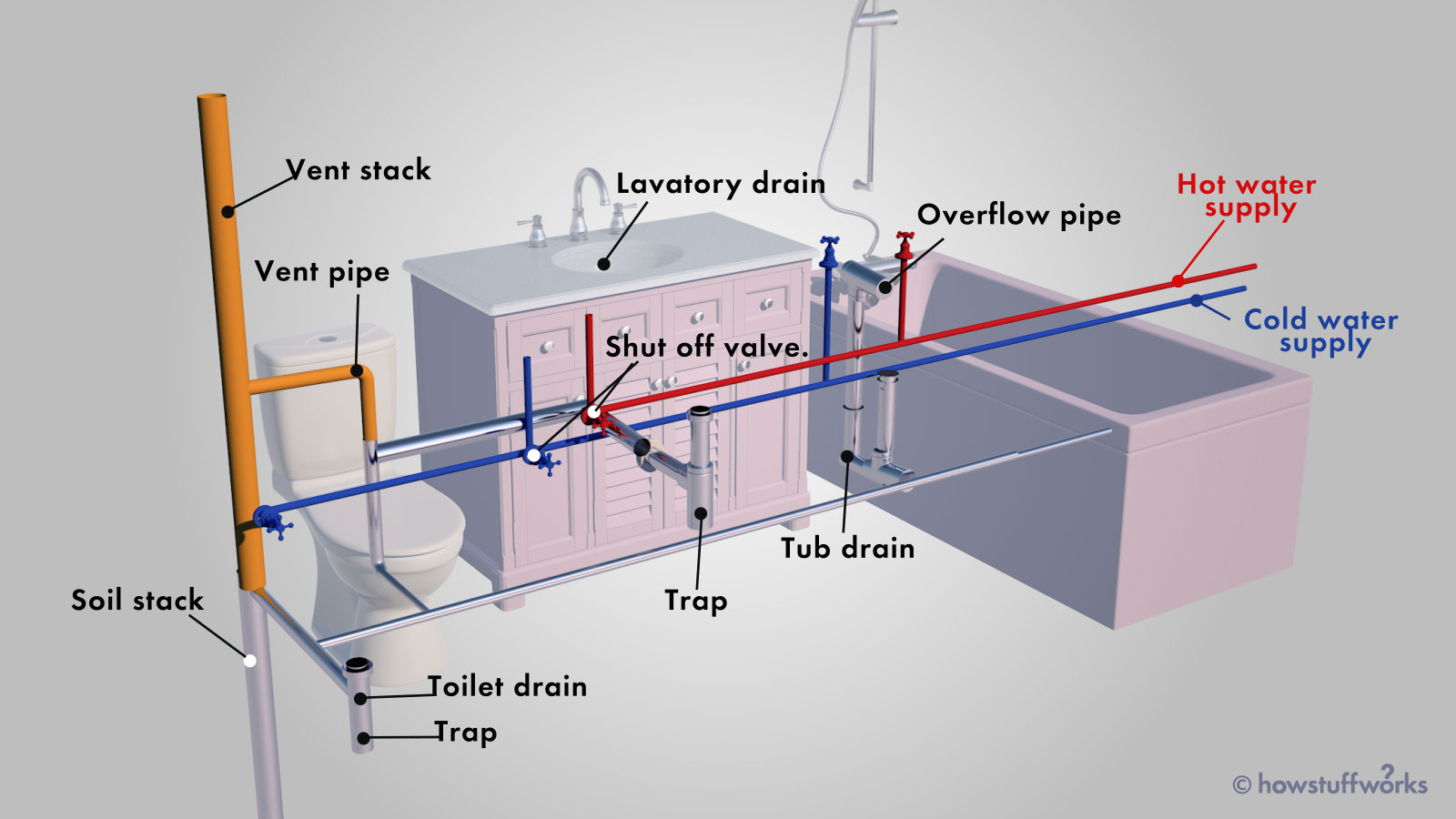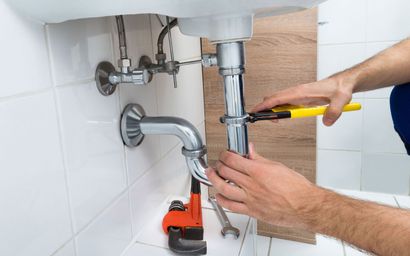Just how do you really feel about Plumbing Installation 101: All You Need to Know?

Comprehending just how your home's pipes system works is vital for each house owner. From providing tidy water for drinking, cooking, and bathing to securely removing wastewater, a well-maintained pipes system is critical for your family's health and wellness and convenience. In this comprehensive overview, we'll discover the intricate network that makes up your home's plumbing and offer ideas on upkeep, upgrades, and taking care of usual problems.
Intro
Your home's pipes system is greater than just a network of pipes; it's a complicated system that guarantees you have accessibility to clean water and reliable wastewater elimination. Knowing its parts and just how they collaborate can aid you protect against costly fixings and make certain whatever runs efficiently.
Standard Elements of a Plumbing System
Pipes and Tubing
At the heart of your plumbing system are the pipes and tubing that bring water throughout your home. These can be made from numerous materials such as copper, PVC, or PEX, each with its advantages in terms of resilience and cost-effectiveness.
Components: Sinks, Toilets, Showers, and so on.
Components like sinks, toilets, showers, and bathtubs are where water is used in your home. Understanding how these fixtures connect to the plumbing system helps in diagnosing troubles and intending upgrades.
Shutoffs and Shut-off Factors
Shutoffs control the flow of water in your plumbing system. Shut-off valves are important during emergencies or when you need to make repairs, permitting you to separate parts of the system without disrupting water flow to the entire home.
Water System System
Key Water Line
The major water line attaches your home to the municipal water or an exclusive well. It's where water enters your home and is dispersed to various fixtures.
Water Meter and Pressure Regulator
The water meter measures your water use, while a stress regulatory authority ensures that water flows at a safe pressure throughout your home's plumbing system, preventing damages to pipelines and components.
Cold Water vs. Warm water Lines
Recognizing the distinction between cold water lines, which supply water directly from the main, and warm water lines, which bring warmed water from the hot water heater, assists in fixing and planning for upgrades.
Drain System
Drain Pipes Piping and Traps
Drain pipelines bring wastewater away from sinks, showers, and toilets to the sewer or septic tank. Traps protect against sewage system gases from entering your home and additionally catch debris that might cause clogs.
Air flow Pipes
Ventilation pipes allow air right into the water drainage system, stopping suction that might slow down drainage and cause catches to vacant. Appropriate ventilation is crucial for keeping the integrity of your pipes system.
Value of Appropriate Water Drainage
Guaranteeing proper drainage protects against back-ups and water damage. Regularly cleansing drains pipes and preserving traps can prevent expensive repairs and prolong the life of your plumbing system.
Water Heating System
Sorts Of Water Heaters
Hot water heater can be tankless or traditional tank-style. Tankless heating systems heat water on demand, while containers store warmed water for instant use.
Just How Water Heaters Connect to the Pipes System
Comprehending how hot water heater connect to both the cold water supply and warm water distribution lines assists in diagnosing problems like not enough hot water or leakages.
Upkeep Tips for Water Heaters
Routinely flushing your hot water heater to eliminate debris, checking the temperature level settings, and evaluating for leakages can prolong its life-span and improve energy performance.
Common Pipes Issues
Leakages and Their Reasons
Leaks can occur because of maturing pipes, loose installations, or high water stress. Addressing leaks quickly avoids water damages and mold and mildew growth.
Clogs and Blockages
Blockages in drains pipes and commodes are often triggered by purging non-flushable things or a build-up of grease and hair. Using drain displays and bearing in mind what drops your drains can prevent blockages.
Indications of Pipes Troubles to Expect
Low water pressure, slow-moving drains pipes, foul odors, or unusually high water bills are signs of prospective plumbing issues that must be resolved without delay.
Pipes Maintenance Tips
Regular Inspections and Checks
Set up yearly pipes examinations to capture concerns early. Look for indicators of leakages, deterioration, or mineral build-up in taps and showerheads.
Do It Yourself Upkeep Tasks
Straightforward tasks like cleaning faucet aerators, checking for bathroom leaks using dye tablets, or insulating exposed pipes in cold climates can prevent major plumbing issues.
When to Call a Professional Plumber
Know when a pipes issue requires specialist expertise. Trying intricate repairs without proper knowledge can cause more damage and higher fixing prices.
Updating Your Pipes System
Reasons for Upgrading
Updating to water-efficient components or changing old pipes can improve water quality, lower water expenses, and increase the value of your home.
Modern Pipes Technologies and Their Advantages
Check out technologies like clever leakage detectors, water-saving bathrooms, and energy-efficient water heaters that can conserve cash and decrease environmental influence.
Price Factors To Consider and ROI
Compute the ahead of time costs versus long-lasting savings when considering pipes upgrades. Numerous upgrades spend for themselves with lowered utility bills and less repair services.
Ecological Influence and Conservation
Water-Saving Fixtures and Appliances
Mounting low-flow taps, showerheads, and toilets can considerably minimize water usage without giving up efficiency.
Tips for Lowering Water Use
Straightforward routines like dealing with leaks without delay, taking shorter showers, and running full tons of washing and meals can preserve water and reduced your energy bills.
Eco-Friendly Pipes Options
Think about sustainable plumbing materials like bamboo for flooring, which is durable and environment-friendly, or recycled glass for kitchen counters.
Emergency situation Readiness
Steps to Take Throughout a Pipes Emergency
Know where your shut-off valves lie and how to shut off the supply of water in case of a ruptured pipe or significant leak.
Value of Having Emergency Situation Get In Touches With Helpful
Keep call details for local plumbing professionals or emergency situation services conveniently available for fast reaction throughout a plumbing dilemma.
Do It Yourself Emergency Fixes (When Relevant).
Temporary repairs like making use of duct tape to spot a leaking pipe or putting a bucket under a trickling faucet can reduce damages till an expert plumber arrives.
Conclusion.
Recognizing the composition of your home's pipes system encourages you to maintain it efficiently, conserving time and money on repair work. By complying with routine maintenance routines and staying notified regarding contemporary pipes modern technologies, you can ensure your plumbing system runs successfully for years to come.
Understanding Your Home Plumbing System: A Comprehensive Guide
Plumbing System: The Lifeline of Your Home
At its core, the plumbing system is designed to perform two primary functions: bring fresh water into your home and remove wastewater. The system is a network of pipes, fixtures, and other components that transport water and sewage. Residential plumbing systems include potable water supply lines, drain-waste-vent (DWV) systems, and various plumbing fixtures that make water use in daily tasks possible.
Key Components:
Water Supply: This part of your plumbing system brings municipal water into your home, passing through the main water supply line. It s responsible for supplying all water needs, from drinking to bathing.
Drainage System: It carries waste and water away from your home to the sewer or septic system. This system includes all the piping within your home that leads to external sewage or septic systems.
Vent System: An essential yet often overlooked component, the vent system allows sewer gases to escape and lets air into the drainpipes, ensuring water and waste move correctly through the system.
Fixture: More Than Just Taps and Toilets
Plumbing fixtures are the most interactive parts of the plumbing system, including faucets, showers, toilets, and sinks. Each fixture is connected to the plumbing system and plays a role in either the delivery of freshwater or the disposal of waste and wastewater.
Types of Fixtures:
Faucets and Sinks: Used for washing hands, dishes, and other daily water needs.
Toilets: Dispose of human waste through the sewage system.
Bathtubs and Showers: Provide bathing facilities, requiring both hot and cold water supply.
Water Supply: The Source of Life
The water supply system is a critical component, ensuring that potable water is available throughout your home for various uses, including drinking, cooking, and cleaning. This system consists of pipes that distribute water to different parts of the house, controlled by valves to regulate the water flow.
Types of Plumbing: Materials and Methods
Various types of plumbing systems and materials are used in residential settings, each with its advantages and applications. From copper and PVC pipes for water supply to cast iron and ABS for drainage, the choice of materials can impact the longevity and efficiency of your plumbing system.
https://intownplumbingtx.com/articles/home-plumbing-system-guide/

Understanding Your Home Plumbing System: A Comprehensive Guide
Plumbing System: The Lifeline of Your Home
At its core, the plumbing system is designed to perform two primary functions: bring fresh water into your home and remove wastewater. The system is a network of pipes, fixtures, and other components that transport water and sewage. Residential plumbing systems include potable water supply lines, drain-waste-vent (DWV) systems, and various plumbing fixtures that make water use in daily tasks possible.
Key Components:
Water Supply: This part of your plumbing system brings municipal water into your home, passing through the main water supply line. It s responsible for supplying all water needs, from drinking to bathing.
Drainage System: It carries waste and water away from your home to the sewer or septic system. This system includes all the piping within your home that leads to external sewage or septic systems.
Vent System: An essential yet often overlooked component, the vent system allows sewer gases to escape and lets air into the drainpipes, ensuring water and waste move correctly through the system.
Fixture: More Than Just Taps and Toilets
Plumbing fixtures are the most interactive parts of the plumbing system, including faucets, showers, toilets, and sinks. Each fixture is connected to the plumbing system and plays a role in either the delivery of freshwater or the disposal of waste and wastewater.
Types of Fixtures:
Water Supply: The Source of Life
The water supply system is a critical component, ensuring that potable water is available throughout your home for various uses, including drinking, cooking, and cleaning. This system consists of pipes that distribute water to different parts of the house, controlled by valves to regulate the water flow.
Types of Plumbing: Materials and Methods
Various types of plumbing systems and materials are used in residential settings, each with its advantages and applications. From copper and PVC pipes for water supply to cast iron and ABS for drainage, the choice of materials can impact the longevity and efficiency of your plumbing system.
https://intownplumbingtx.com/articles/home-plumbing-system-guide/
Hopefully you liked our section about Anatomy of a House: Understanding the Components. Thank you for taking a few minutes to read our blog. For those who enjoyed our article kindly be sure to pass it around. I truly appreciate your readership.
Free Quote